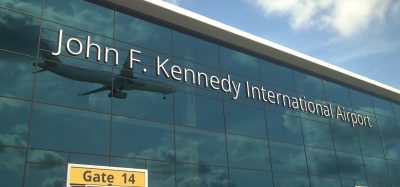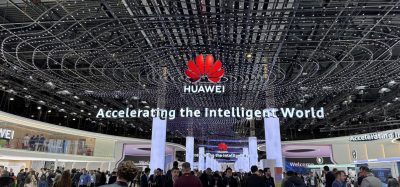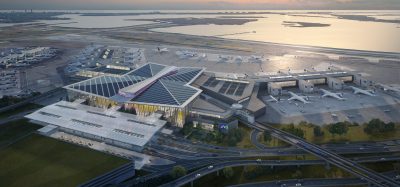Reducing TCO, maximising space usage, and improving sustainability with passive optical LAN
- Like
- Digg
- Del
- Tumblr
- VKontakte
- Buffer
- Love This
- Odnoklassniki
- Meneame
- Blogger
- Amazon
- Yahoo Mail
- Gmail
- AOL
- Newsvine
- HackerNews
- Evernote
- MySpace
- Mail.ru
- Viadeo
- Line
- Comments
- Yummly
- SMS
- Viber
- Telegram
- Subscribe
- Skype
- Facebook Messenger
- Kakao
- LiveJournal
- Yammer
- Edgar
- Fintel
- Mix
- Instapaper
- Copy Link
Posted: 2 June 2021 | Nokia | No comments yet
In their webinar which took place on 19 May, Nokia experts showed how a cost-effective, scalable and flexible optical LAN can support all sub-systems in an airport and grow as the airport adopts new digital applications and services in the future.


Airports are embracing Industry 4.0 technologies such as industrial IoT, artificial intelligence and machine learning to expand their operational awareness, automate processes and improve their end-to-end efficiency.
As the digital sophistication of the airport increases, the airport local area network (LAN) needs to expand to provide secure, reliable, high-bandwidth connectivity for gate operations, baggage systems, surveillance cameras, kiosks, security systems, biometrics, digital signage and more.
Today’s business climate calls for a smarter, greener and more cost-efficient way of deploying airport networks. Passive optical LAN can help airports address these priorities, while ensuring service reliability and quality of service for all airport stakeholders.
In a webinar on 19 May, Nokia experts showed how a cost-effective, scalable and flexible optical LAN can support all sub-systems in an airport and grow as the airport adopts new digital applications and services in the future.
About passive optical LAN
Passive optical LANs leverage the tremendous bandwidth capacity of optical fibre, as well as its ability to cover distances up to 20 km without the need for intermediate electronics between the central switch and the end device. This reduced need for intermediate electronics enables airports to free up space that can be used for concessions or retail. Most airports currently use distance restricted CATx-based LANs that require a closet or equipment room no more than 90m away from the end device.
Fibre’s ability to support terabits of bandwidth also provides investment protection for the airport. Copper-based CATx cabling has bandwidth limits that will keep it from meeting the ever-growing bandwidth demands of passengers and digital operations. The costs associated with upgrading a CATx cable infrastructure are significant. By providing much higher capacity, a passive optical LAN solution avoids these costs and gives airports a wireline LAN foundation that can fully support their digitalisation journey.
The Nokia Optical LAN solution is designed to meet the high availability demands of the telecommunication industry. Airports have many sub-systems with a range of service availability requirements. The Nokia Optical LAN solution fully supports this mix of service requirements for all airport sub-systems and can scale as their needs expand. It is very flexible and can support tens to tens of thousands of ports.
Benefits of optical LAN
- Space savings: A passive optical LAN removes the need to use airport closets or equipment rooms to hold racks for switches, MDFs and HVAC systems. An airport can use the space gained for retail, concessions or other use cases. This can improve the passenger experience and give the airport more ways to generate non-aeronautical revenue.
- Cost efficiencies: Optical LANs lower CAPEX and OPEX and provide additional cost benefits through reduced power consumption, reduced HVAC investment and reduced footprint. The costs associated with the Nokia Optical LAN solution are significantly lower than CATx solutions for new builds. For solution hardware and software, Nokia Optical LAN reduces total cost of ownership (TCO) by up to 50 per cent compared to a similarly scaled CATx solution. The use of fibre provides investment protection that anticipates the ever-growing data needs of passengers, partners and airport operations and avoids the costly replacement cycles associated with CATx cable infrastructure.
- CO2 reduction: Nokia Optical LAN is a proven “green” solution that consumes up to 40 per cent less power than a CATx solution, depending on network configuration and size. CATx solutions use many intermediate switches, which consume a significant amount of power.
Watch the webinar on demand here.

















